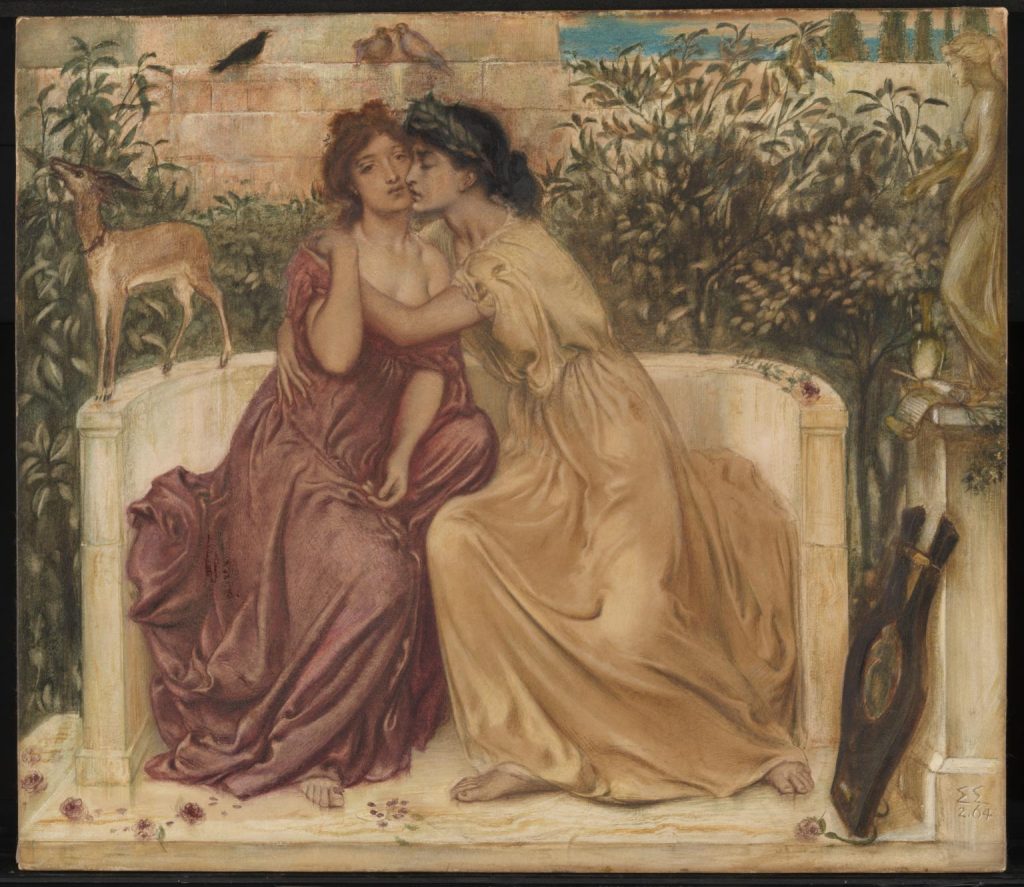Vaishnavi Srivastava
Happy Pride! As Pride Month kicks off we at Abir Pothi compiled a list of paintings in art history that are, well, just a little bit fruity. So next time a boomer hits you with a “I come from a generation where a couple means a man and a woman” you have 11 instances to show how wrong they really are. Or you could just enjoy the beauty and affection in these artworks which they are meant to represent at their very core. Either way, following are 11 famous instances of queer love being depicted in art history:
1. Bhupen Khakhar, “Yayati”.
Bhupen Khakhar is one such legend in the discourse of Indian queer art history. The openly gay artist has a number of infamous paintings, that display bold physical intimacy between two men. Khakhar’s works go in length to display themes of religious conflict and personal sexuality.
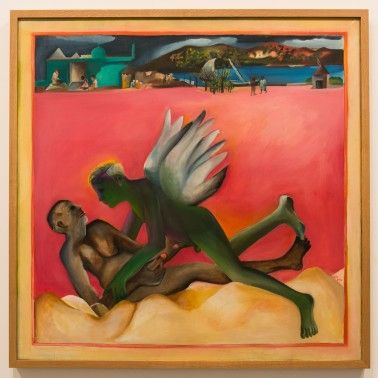
Courtesy: Pinterest
2. Michelangelo, “Victory”
The very openly erotic sculpture by Michaelangelo depicts the Renaissance-era-sculptor between the legs of his lover Cavalieri. This magnificently carved homo-erotic sculpture goes down in history as one of the most important and applauded works of art in queer history.
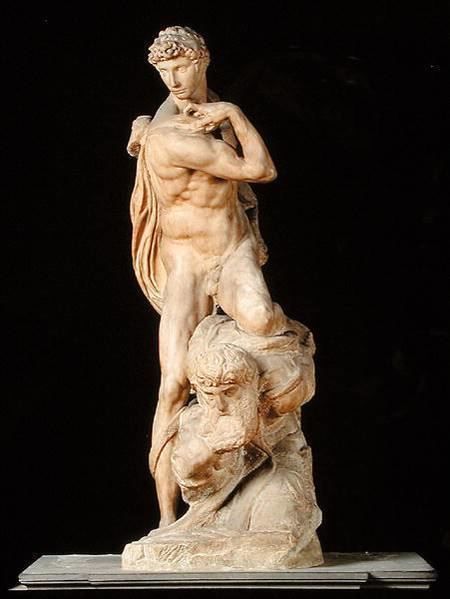
Courtesy: Pinterest
3. Nyankh-khnum and Khnum-hotep kissing
At the time the nose-to-nose kissing position was reserved for straight couples in ancient Egyptian art, except for this famous artwork in the Tomb of Niankhkhnum and Khnumhotep-the two groomers of the king.
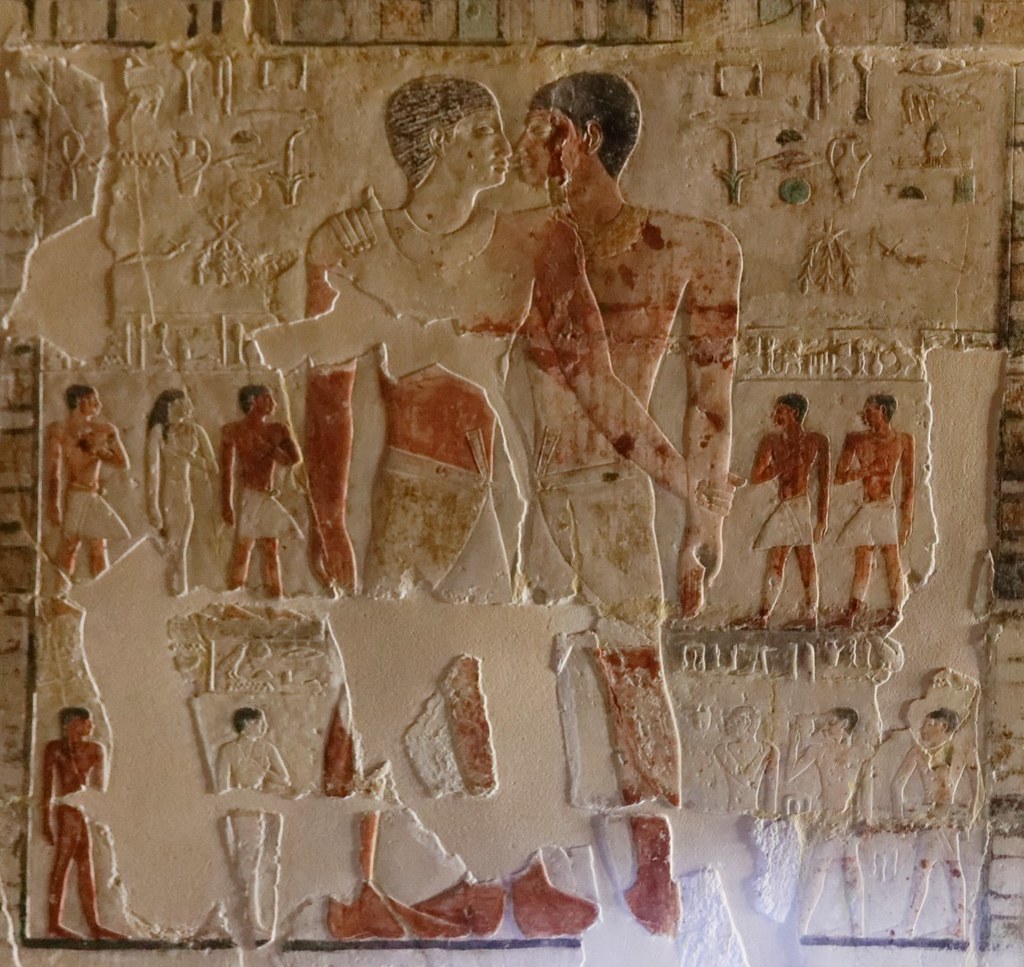
Courtesy: Flickr
4. Fresco from the north wall of the Tomb of the Diver at Paestum
In Ancient Greece Homosexual relations and their depictions in art played a major role in the dynamics of bravery and courage in terms of war (re: Sacred Host Army that was said to consist of 150 homosexual men who were the most brave and brutal). This is attributed to several artworks depicting homosexual relations.
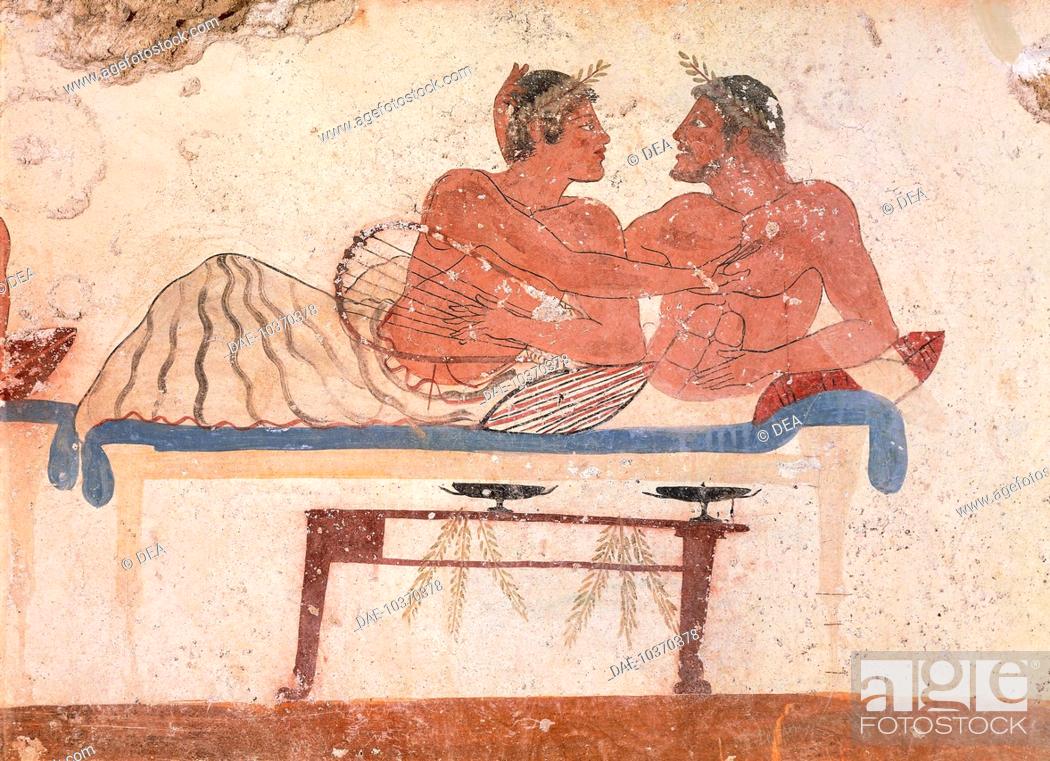
Courtesy: ageofstock
5. Sir Lawrence Alma-Tadema, “Sappho and Alcaeus”
Sappho of Lesbo is a very widely known figure who dedicated poetries to female beauty. The origins of the words Lesbian and Sapphic comes from her name. The painting Tadema depicts the island of Lesbos wherein Sappho and her companions listen to Alcaeus play the instrument.
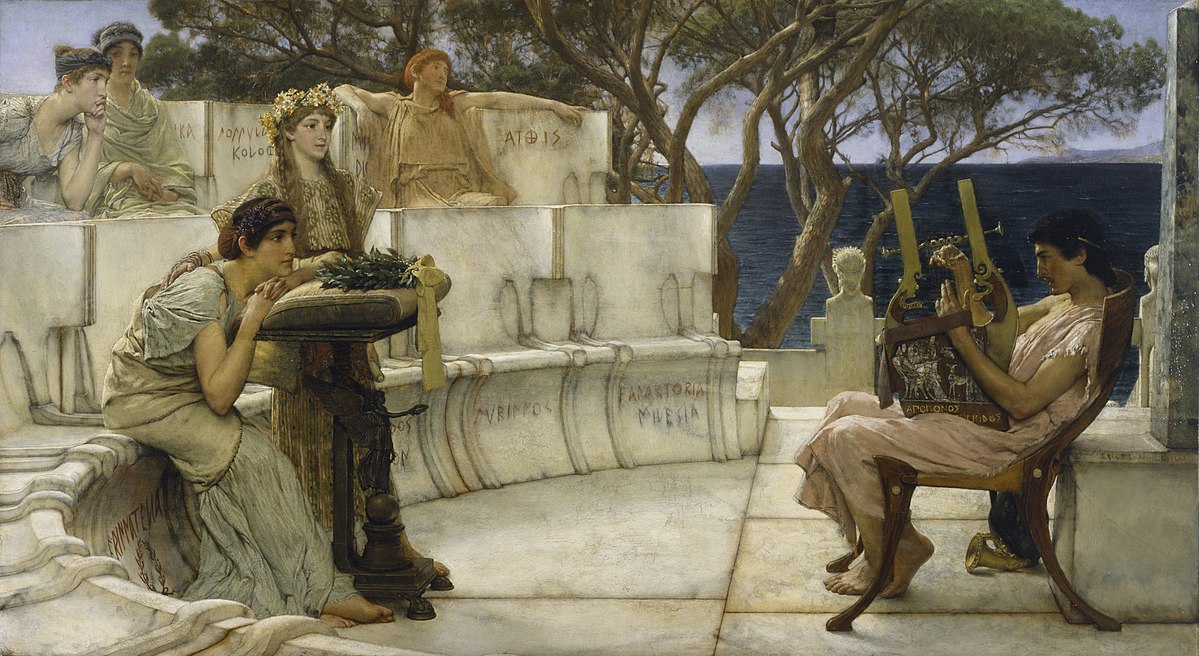
Courtesy: Wikimedia Commons
6. Unknown, “The Virgin At The Temple”
Showcasing the modern lives of young men in Florence the painting includes very chalant suggestive gestures and fashion of the time. The flirtatious gestures between the two men in the midst of the scene are representative of the same-sex relations portrayal by the artist.
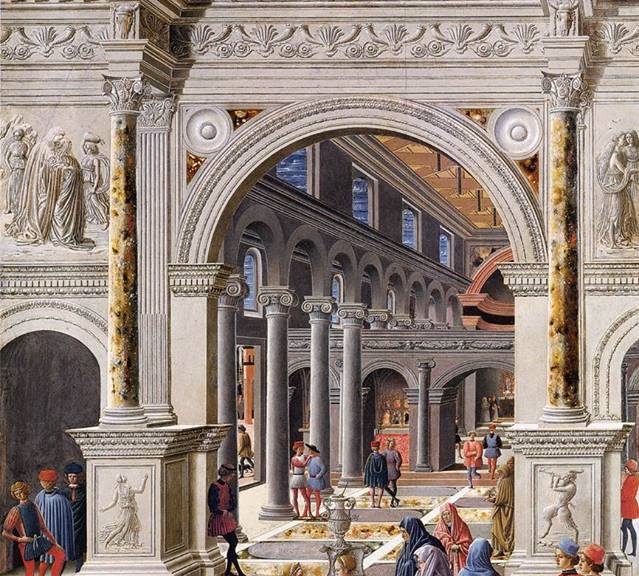
Courtesy: Queer Art History
7. Roman relief of two men kissing.
As evident from the infamous marriage between Nero and Sapporo Ancient Romans had a rich history of homosexual relations. This resulted in artworks as such depicting the same.
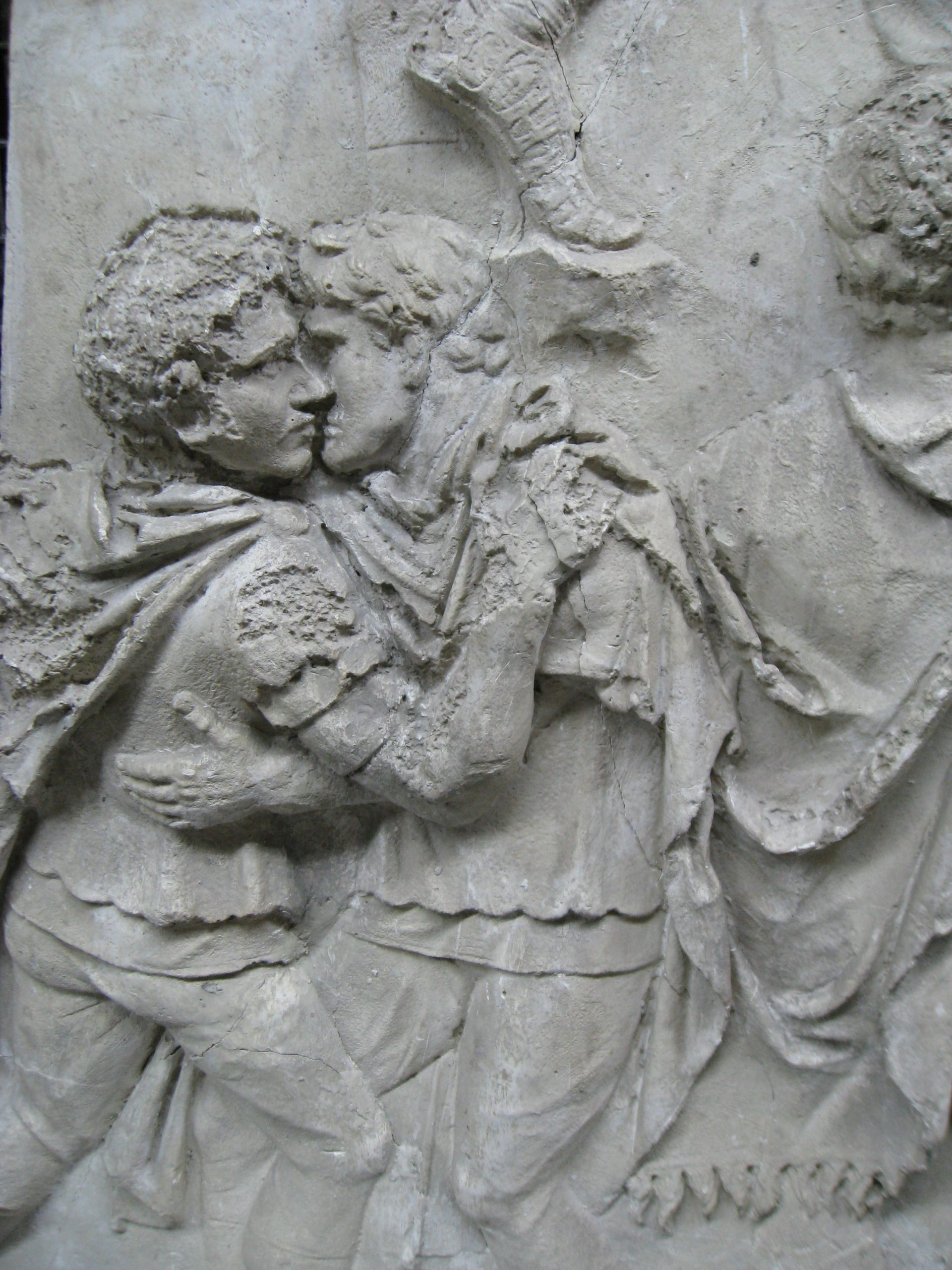
Courtesy: orbis mirabilis romae-wordpress
8. Caravaggio, “Musicians”
In the following painting, Caravaggio showcases same-sex in the influence of music and love which is evident with the presence of cupid in the corner of the painting.
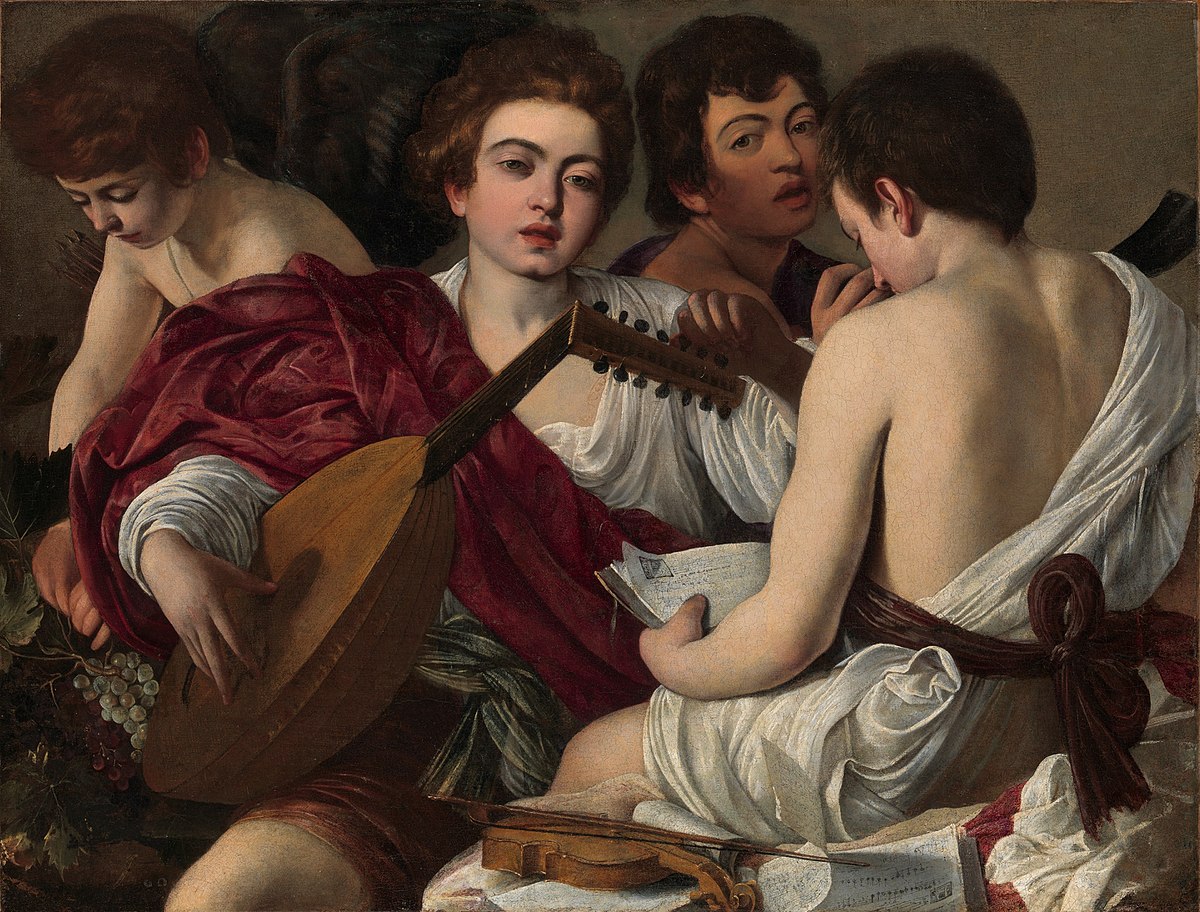
Courtesy: Wikipedia
9. Ustad Ruknuddin, “Ladies of the Zenana on a Roof Terrace”
While the infamous painting by Ustad Ruknuddin dates back to c. 1666, Bikaner has raised controversies surrounding the “male gaze” in the depiction of women. It was proposed by Baylee Woodley how queer folks may reclaim the painting as it would be pleasurable to the lesbian perspective- this display of intimacy and affection among the women.
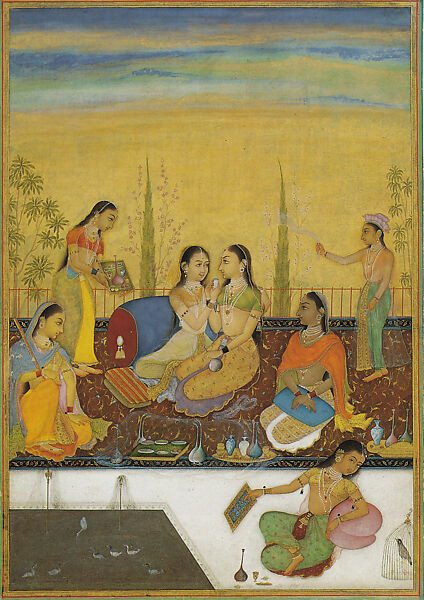
Courtesy: Met
10. Embracing In A Green House
Same-sex relations among men have been depicted in ancient Japan for ages and are celebrated. It was most evident in the Tokugawa period of Japanese history.
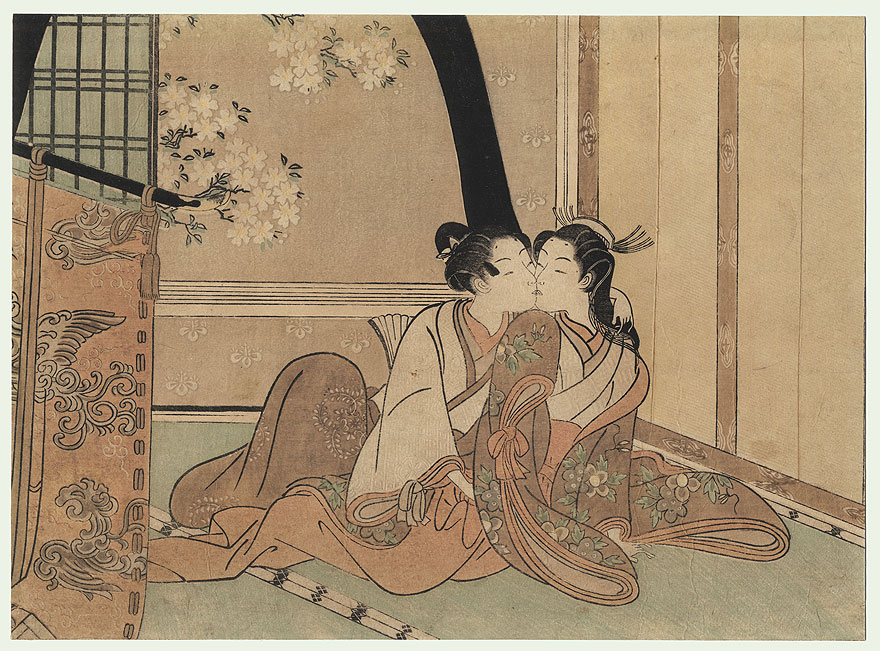
Courtesy: Fuji Arts
11. Simeon Solomon, “Sappho and Erinna in a Garden”
And finally, this infamous painting by Simeon Solomon depicts Sappho the famous poet of Greece who wrote about female beauty embracing Erinna.
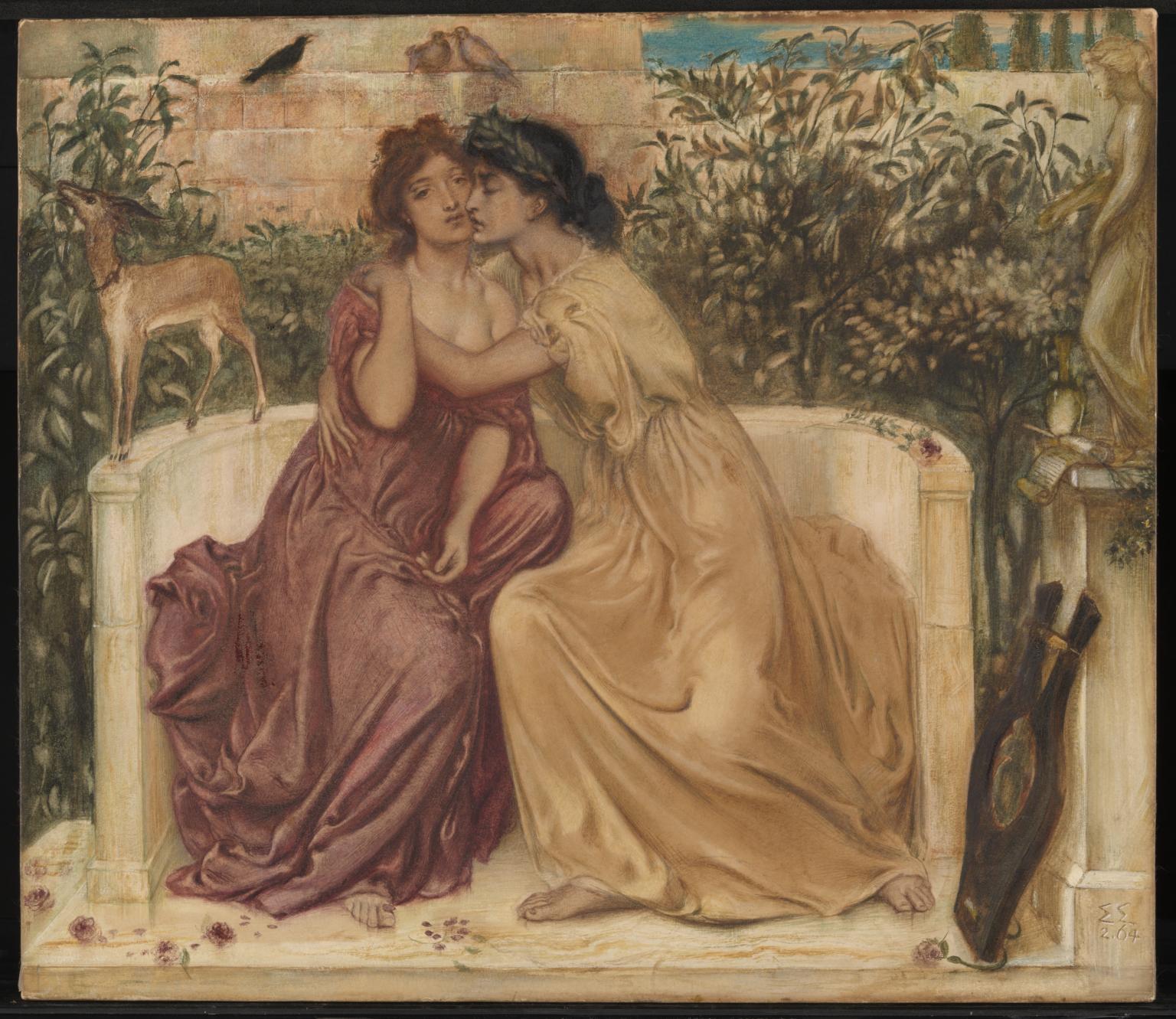
Courtesy: Tate
References
https://www.vectornator.io/blog/the-queer-history-of-art/#the-depiction-of-homosexuality-during-the-renaissance
https://www.queerarthistory.com/tag/gay/
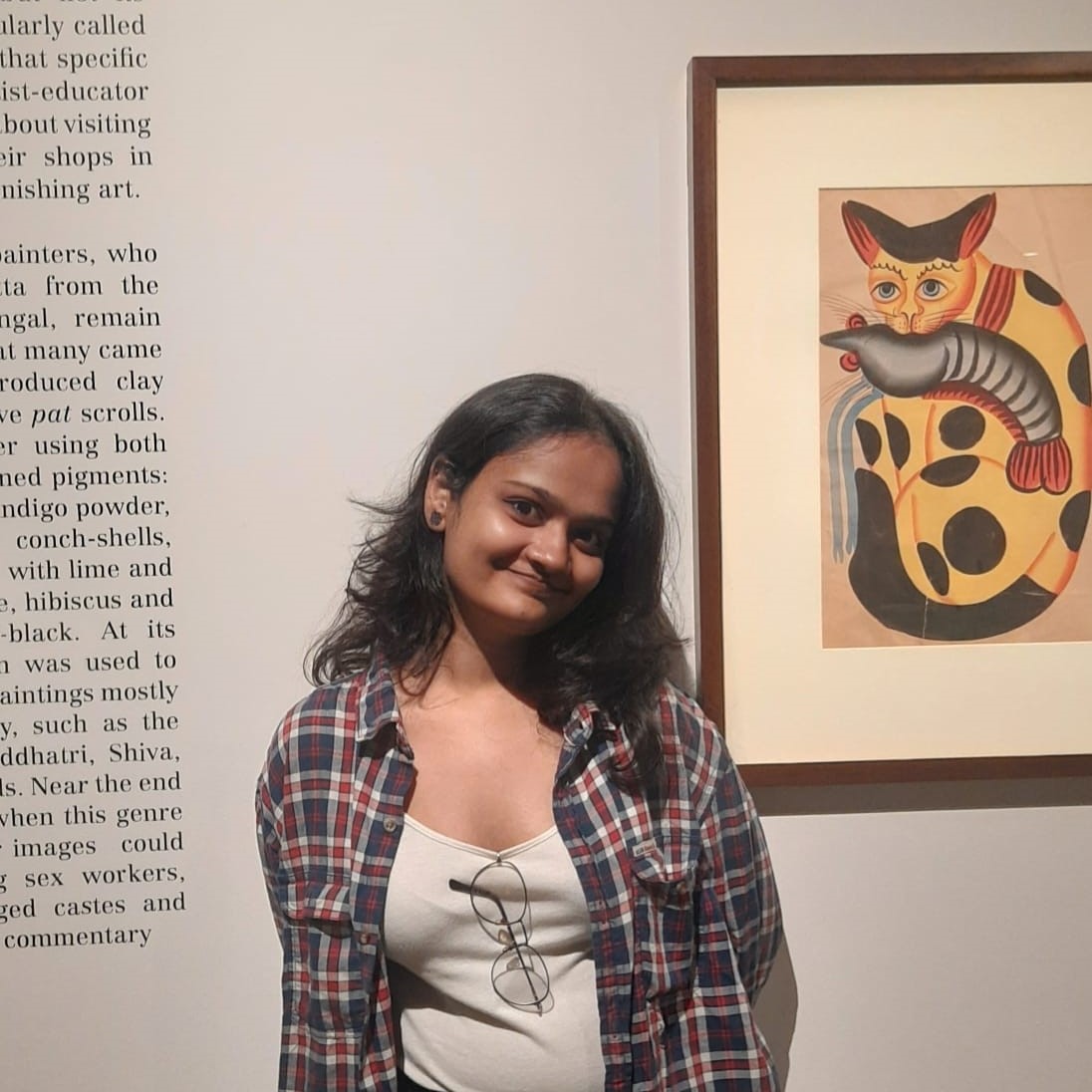
Vaishnavi Srivastava is a learning writer, a keen researcher and a literature enthusiast. She is a Sub-editor at Abir Pothi.

